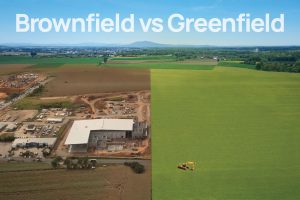This article was first published by New Zealand Technology Magazine.
Wiley, the project delivery company’s, Business and Engineering Manager, Peter Thomson has fulfilled multi-disciplinary roles to deliver innovative facility solutions across meat industry projects internationally.
New Zealand’s meat industry is one of the cleanest in the world. Having always been a leader in terms of being environmentally conscious. In recent years the industry has been making continuous efforts towards carbon neutrality.
With a strong emphasis on sustainability in industry and recent related media coverage, growing environmental concerns and social pressure, the New Zealand red meat industry will need to seek methods of sustainability across all areas of processing to retain market position. This begins on the processing floor, from LED lights, hot / cool room usage, processing equipment and flow efficiencies to energy conservation and generation options including solar, batteries for storage and energy capture and redistribution, with covered anaerobic lagoons (CAL’s) for biogas capture and distribution.
The 2018 Beef + Lamb New Zealand report highlighted that New Zealand’s existing focus is evident with emissions 30% below 1990 for the beef and sheep industry (levels, impressive when considering that the goal under the Paris accord was an 11% reduction). With these successes, and one of the world’s most advanced meat processing industries, what are the opportunities for the NZ red meat industry when it comes to sustainability and keeping green?
Technology and Industry 4.0 will shortly begin to play a large part in the way facilities are operated. Connected devices and the data they create will bring countless opportunities to increase output and find efficiencies through diverse areas. The simple win for operators will be dramatic shift in energy consumption leading to savings in operational costs. From sensored lights, only activated on when there is movement in an area, to staggered engagement of cooling systems to eliminate peak demand, and other autonomous systems designed to eliminate wasted energy from an operation, these devices and systems will monitor use to mitigate spikes and align energy use with output and revenue.
From the processing floor and i4.0 we move on to producing energy. When considering the coupling of batteries with renewable energy generation, the opportunity exists to significantly decrease electrical consumption and cost for manufacturers.
This general approach to ensure economically viable adoption of energy sustainability measures is to follow three principles in order:
1. Audit, assess and minimise current energy usage – eliminate waste
2. Identify and engineer renewable options that minimise current costs (accessing peak shaving, purchase energy from green sources, adopt simple green energy solutions like roof mounted solar)
3. Adopt facility scale green energy generation solutions including batteries to allow for time shifting of self-generated green energy
Preliminary calculations suggest simple reduction in peak demand could have the potential to save manufacturers up to 30 per cent on their monthly electricity costs and with a low capital cost this is a logical area to seek out.
Other types of energy storage solutions that can assist in managing peak demand and reducing environmental impact, include biogas that can be held under a pond cover (covered anaerobic lagoon) and thermal energy that can be stored in the forms of insulated hot water tanks or even ice.
With innovation playing a key role in moving the country beyond the current plateau and competing on the international stage, integrating these strategies into business plans will likely be more important than delivering the next upgrade to automated boning or refrigeration. It is when an industry embraces change that it can truly deliver sustainability, both economically and environmentally.
Peter Thomson, Business and Engineering Manager at Wiley, the project delivery company.




